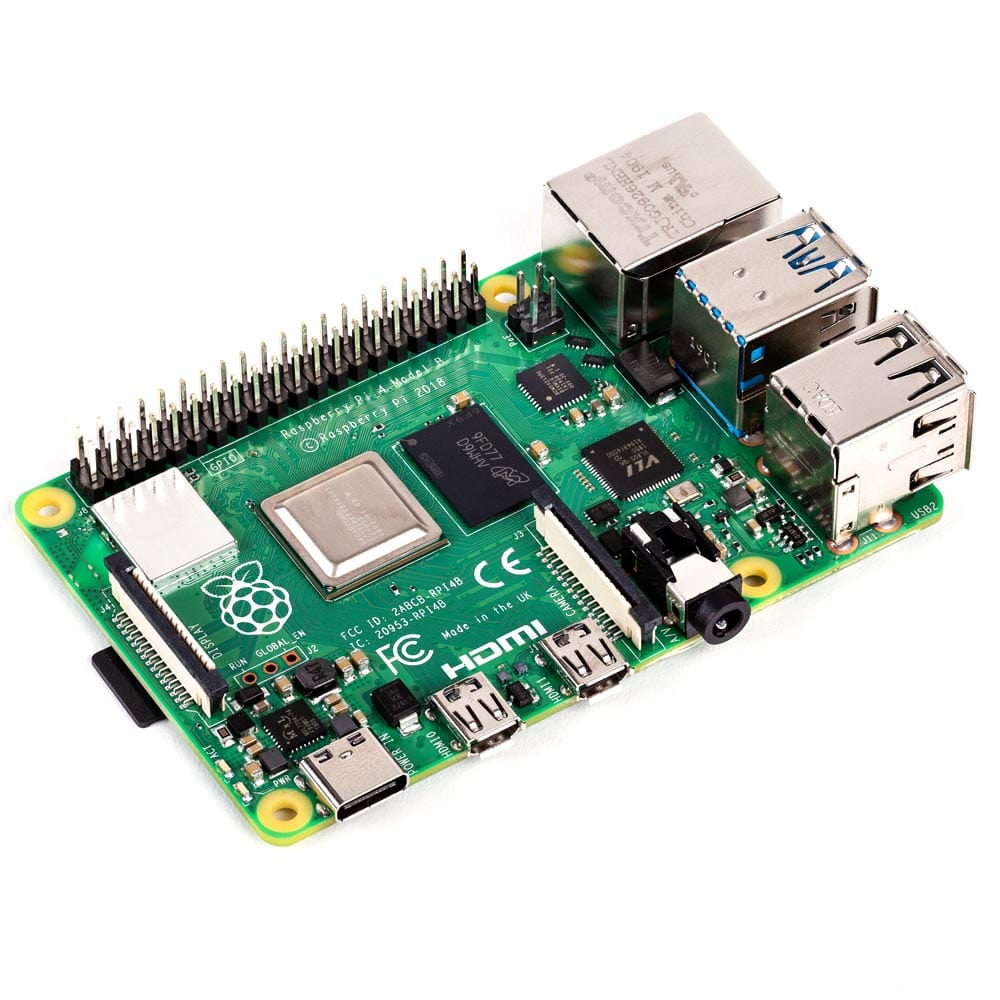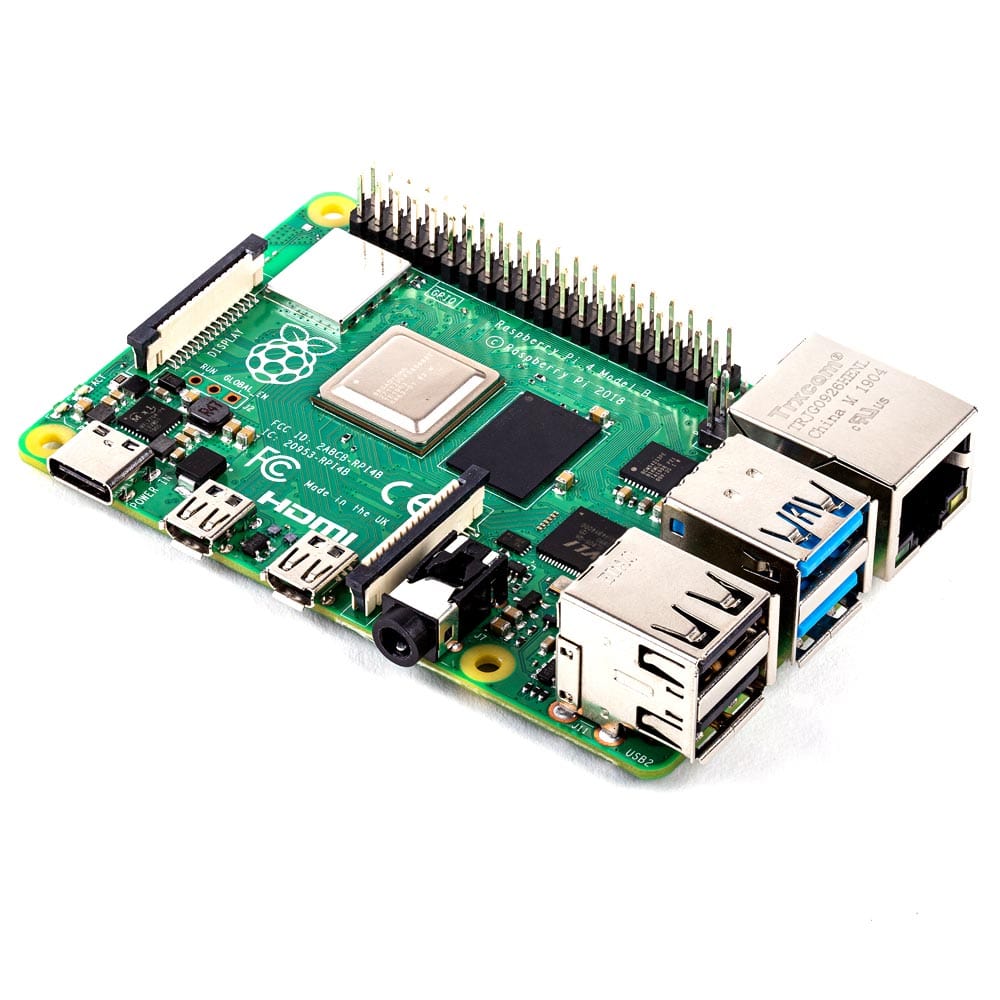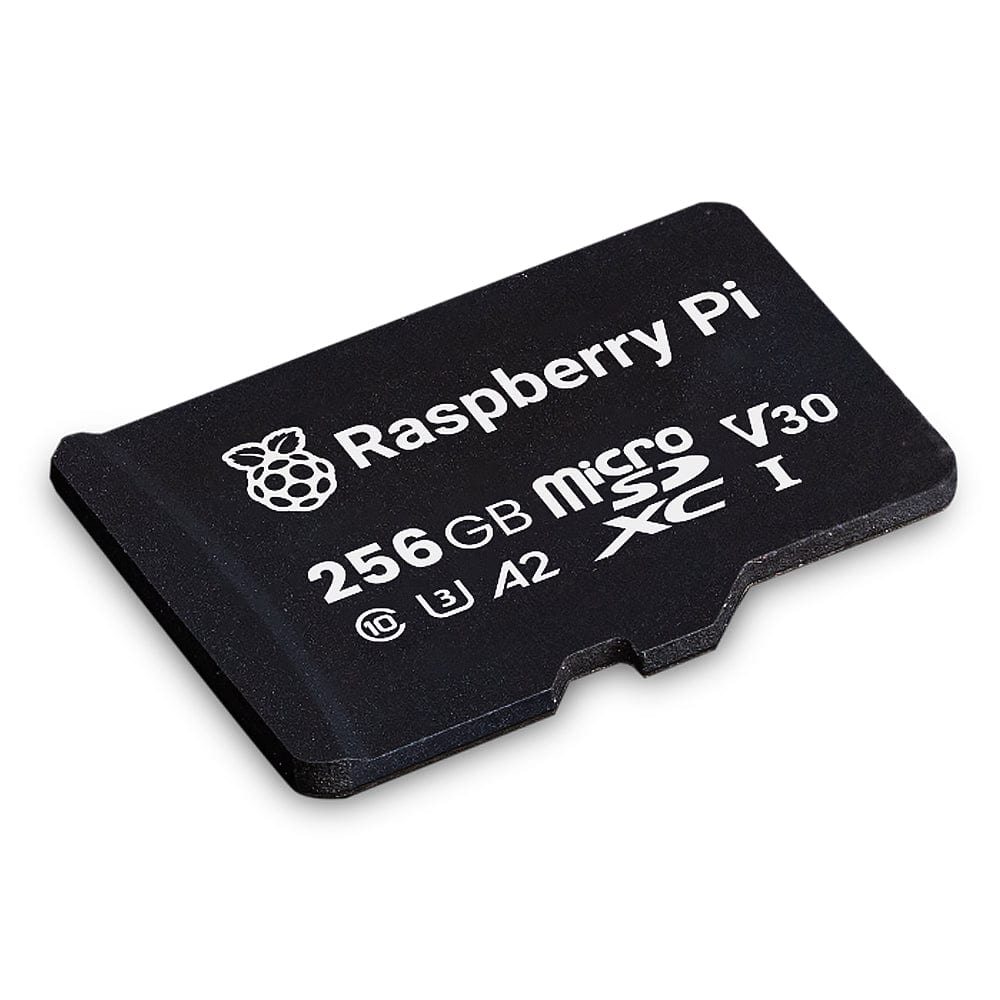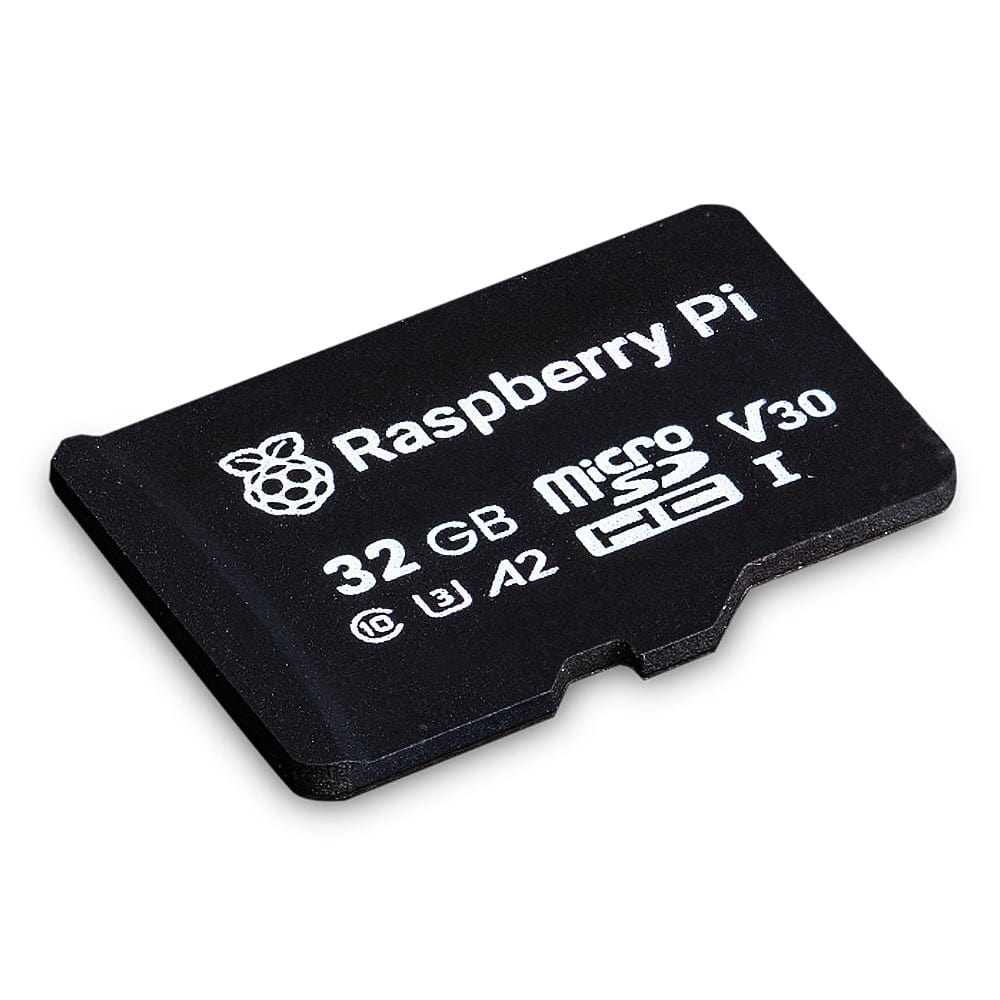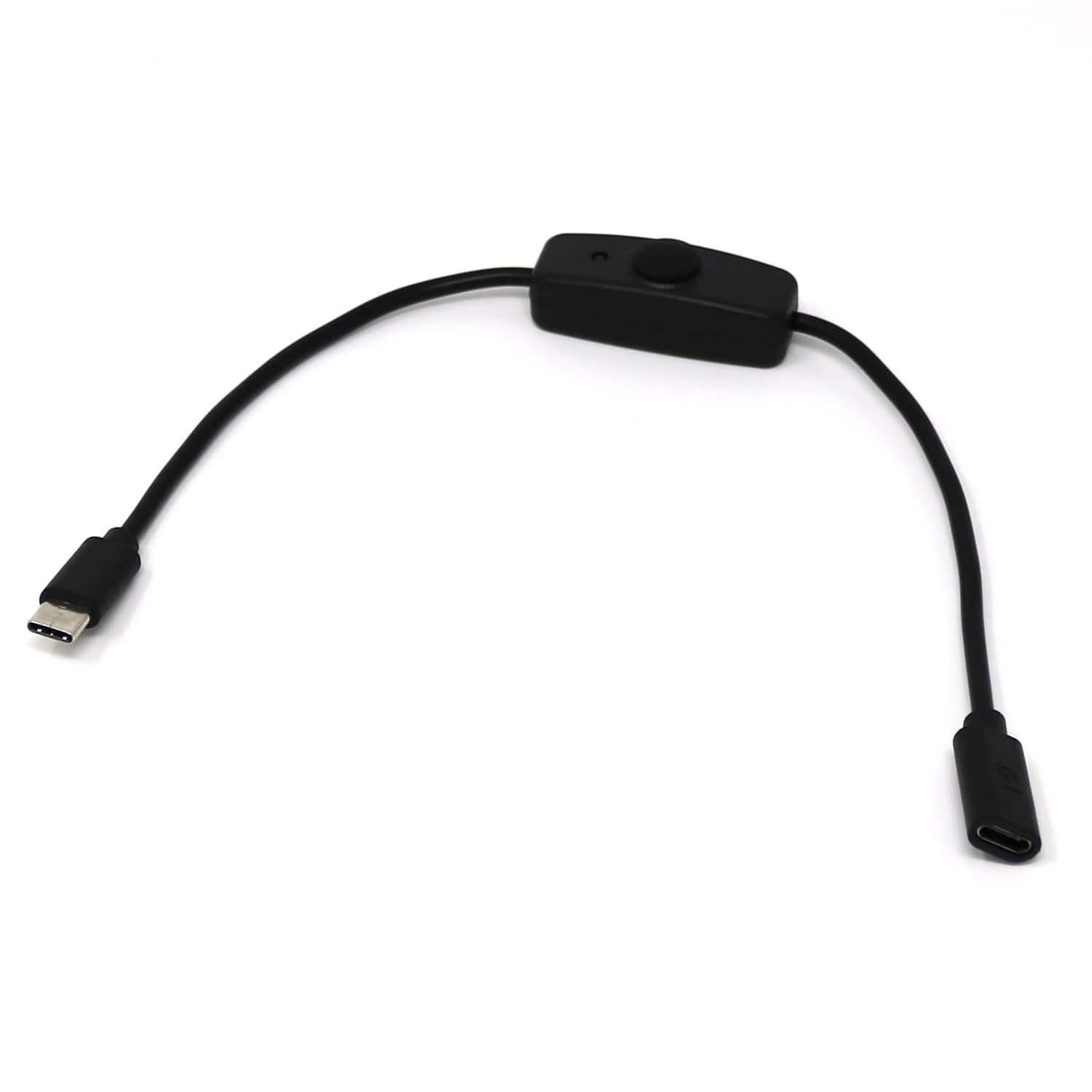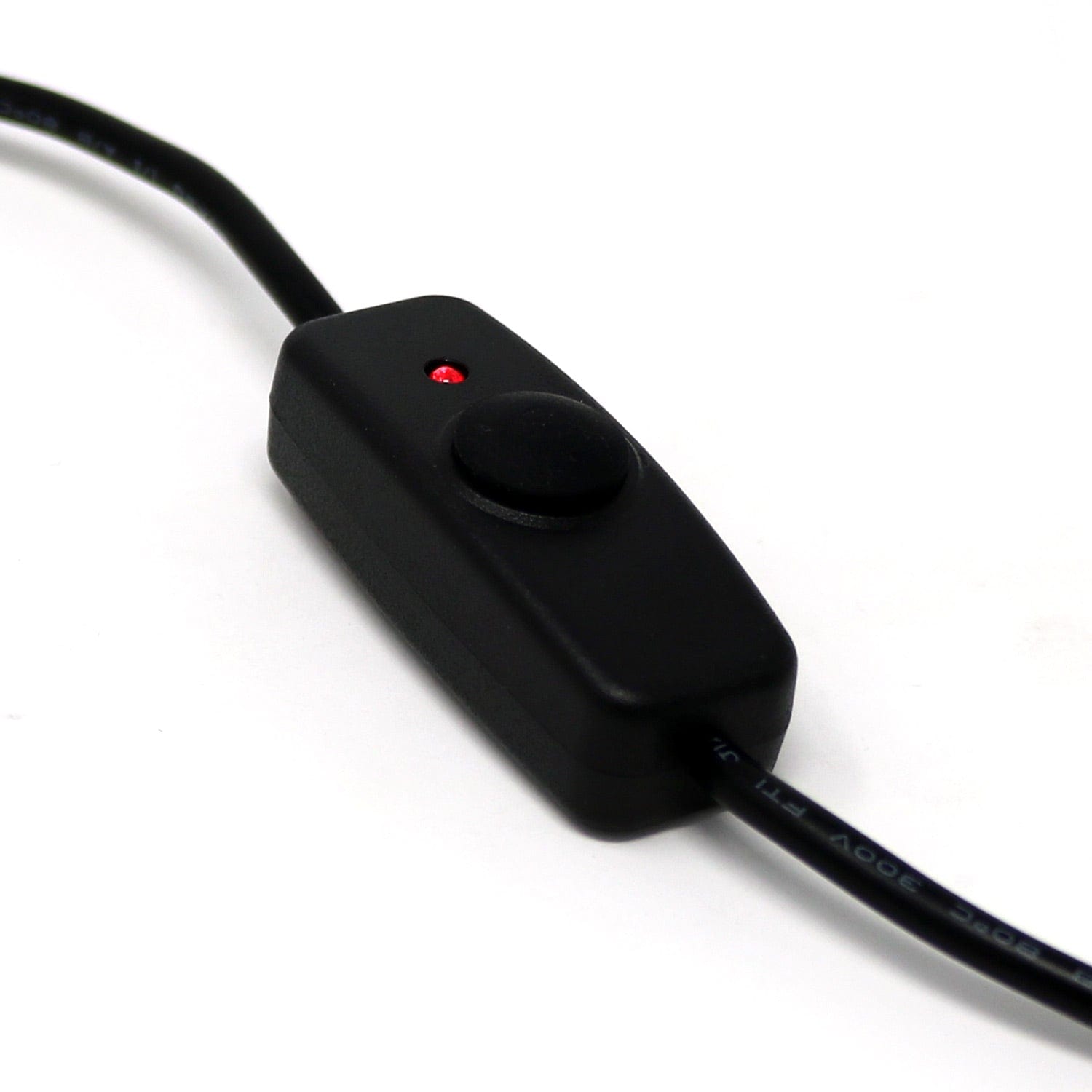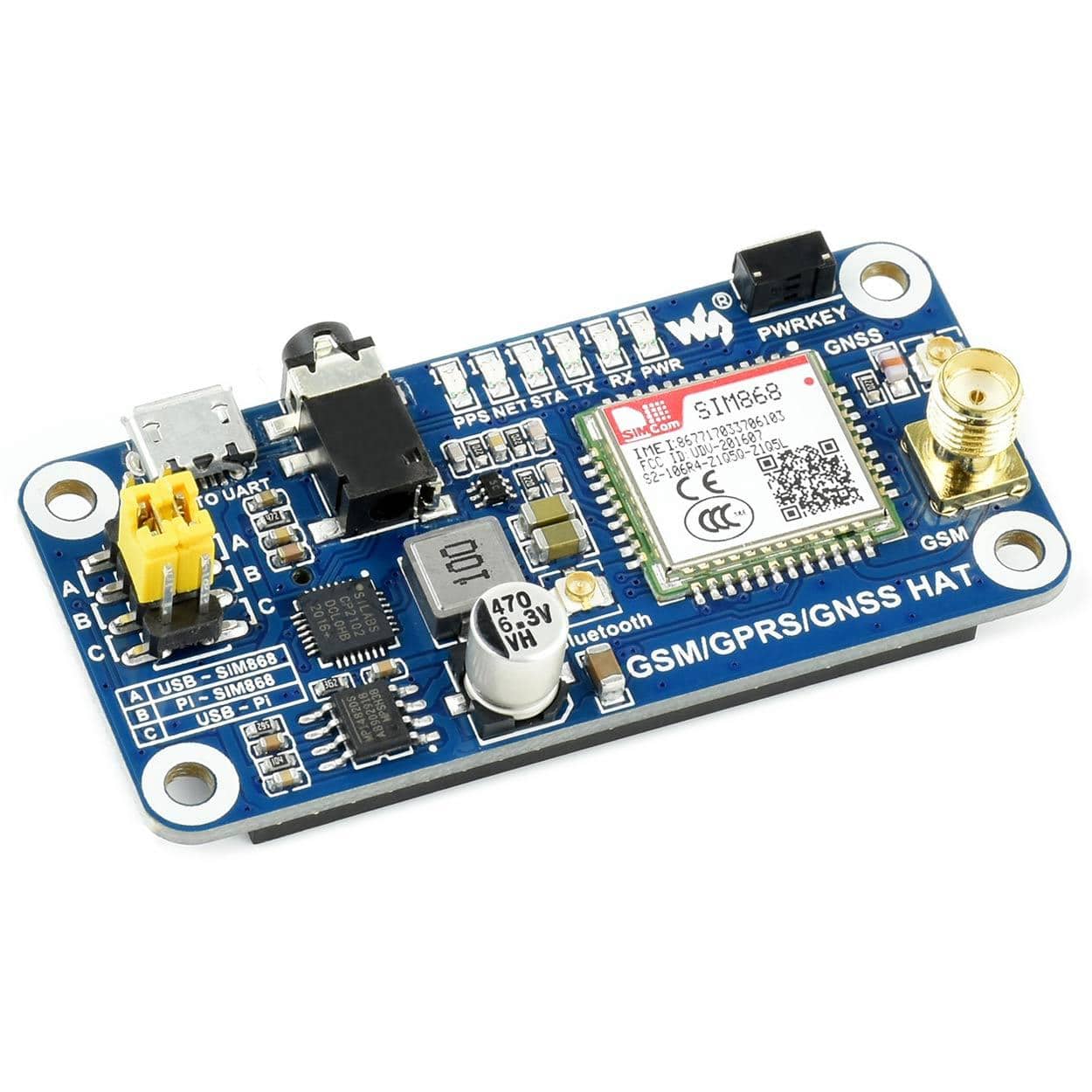
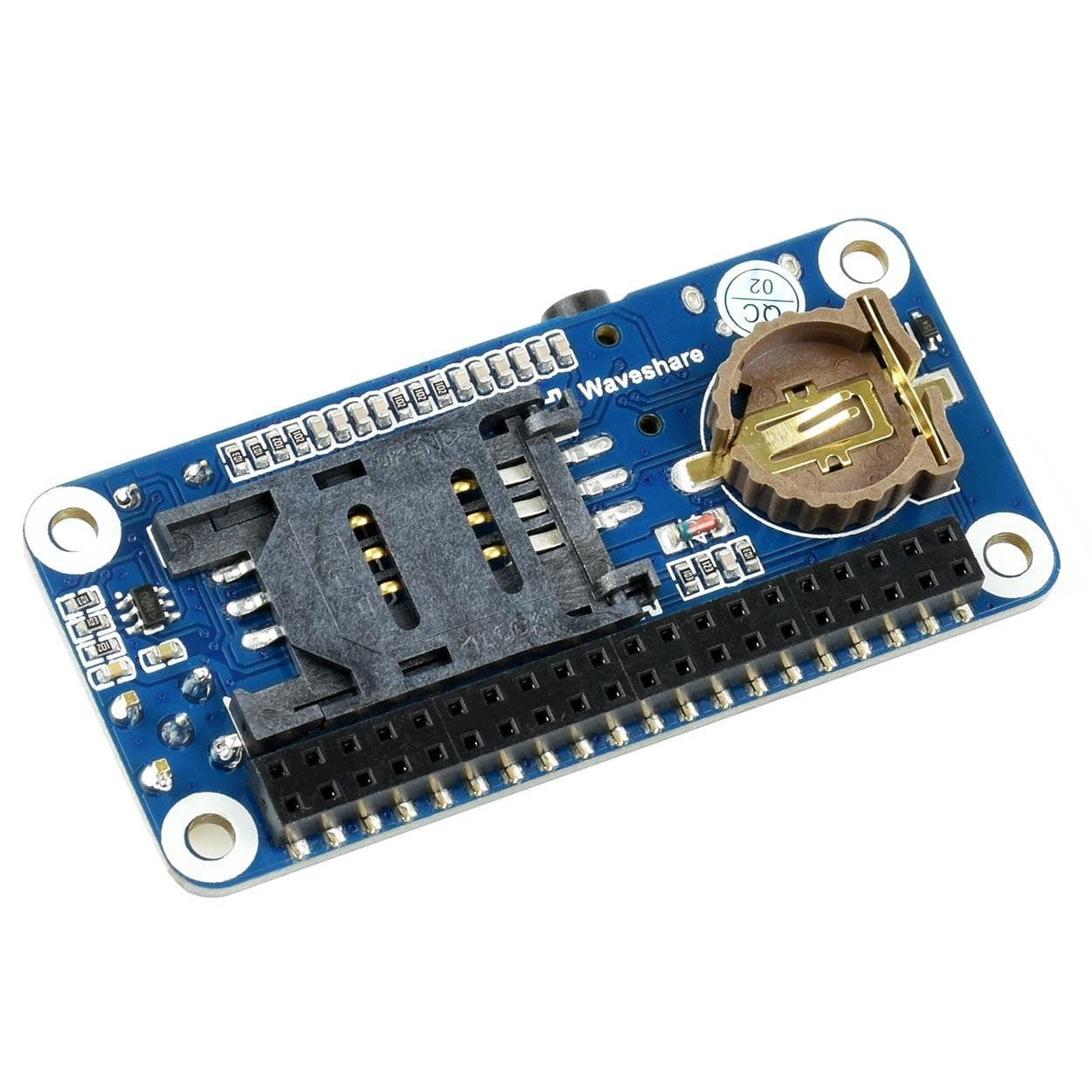
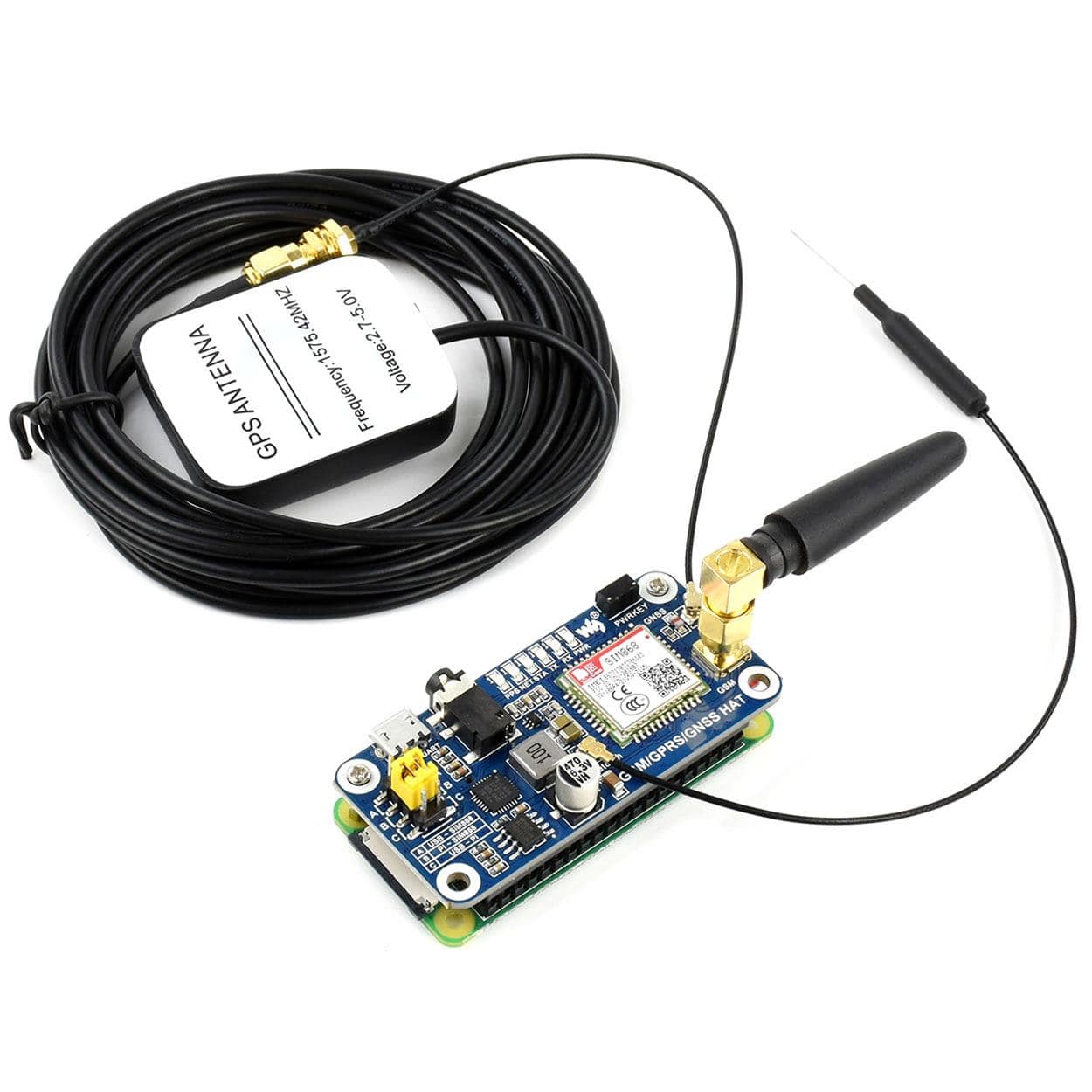
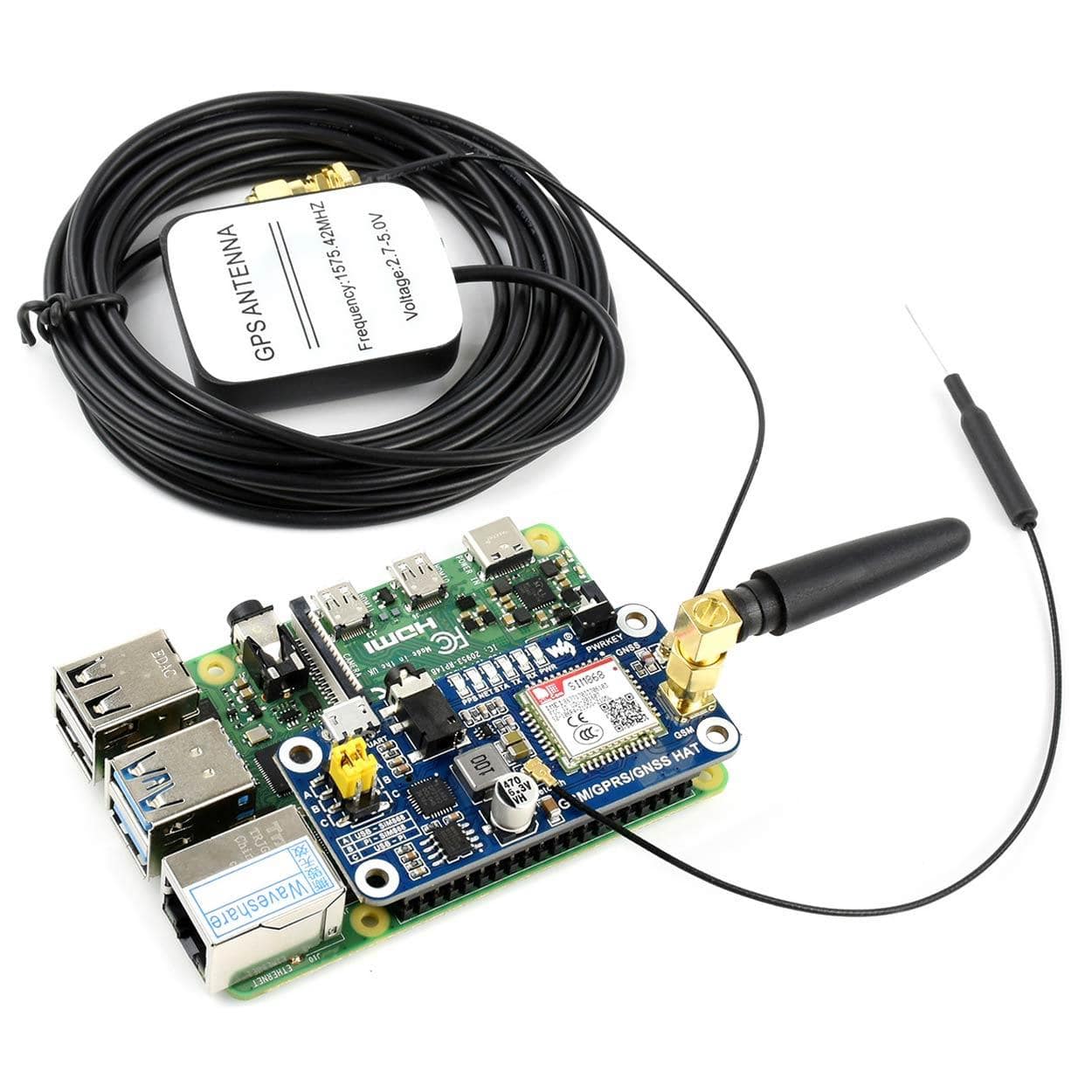
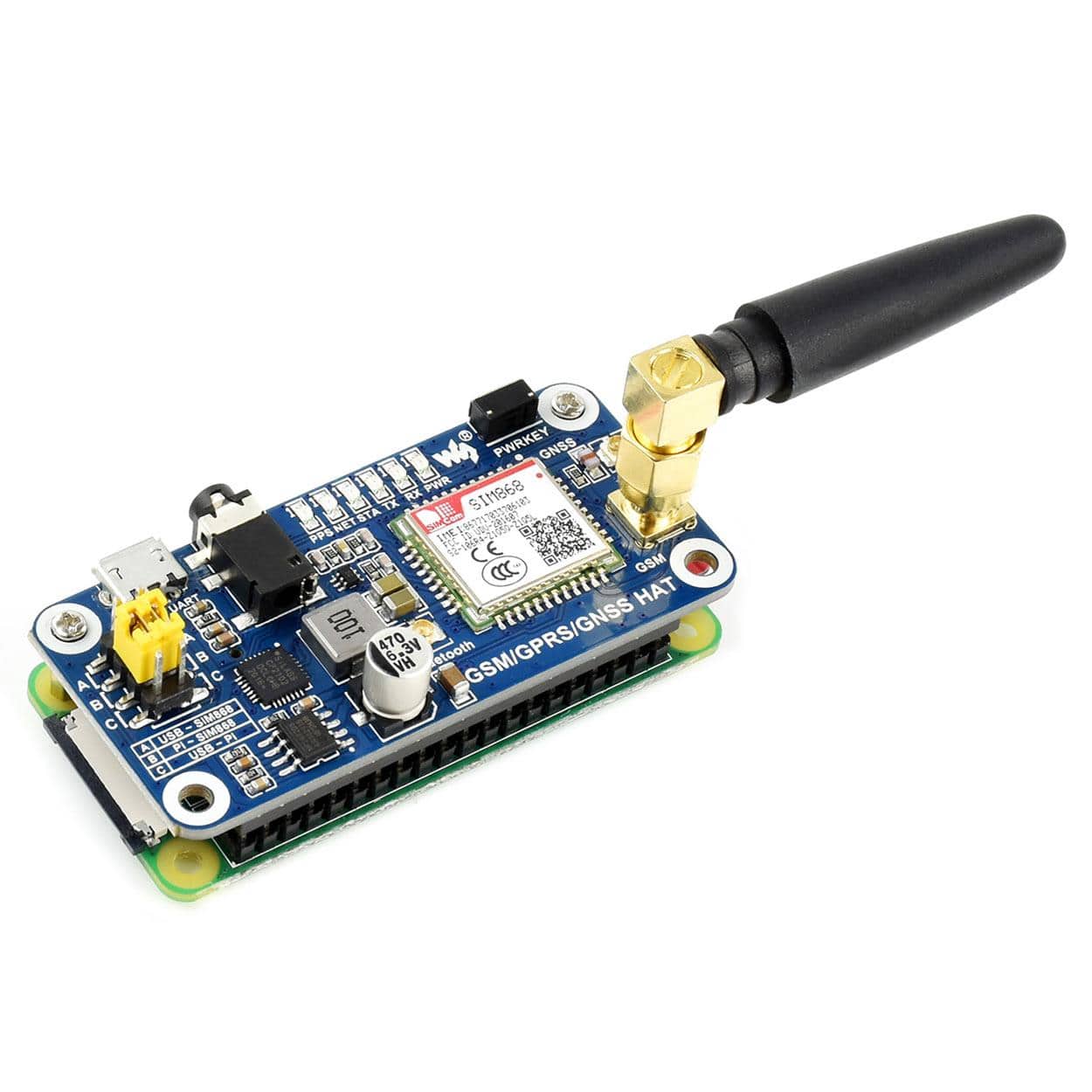
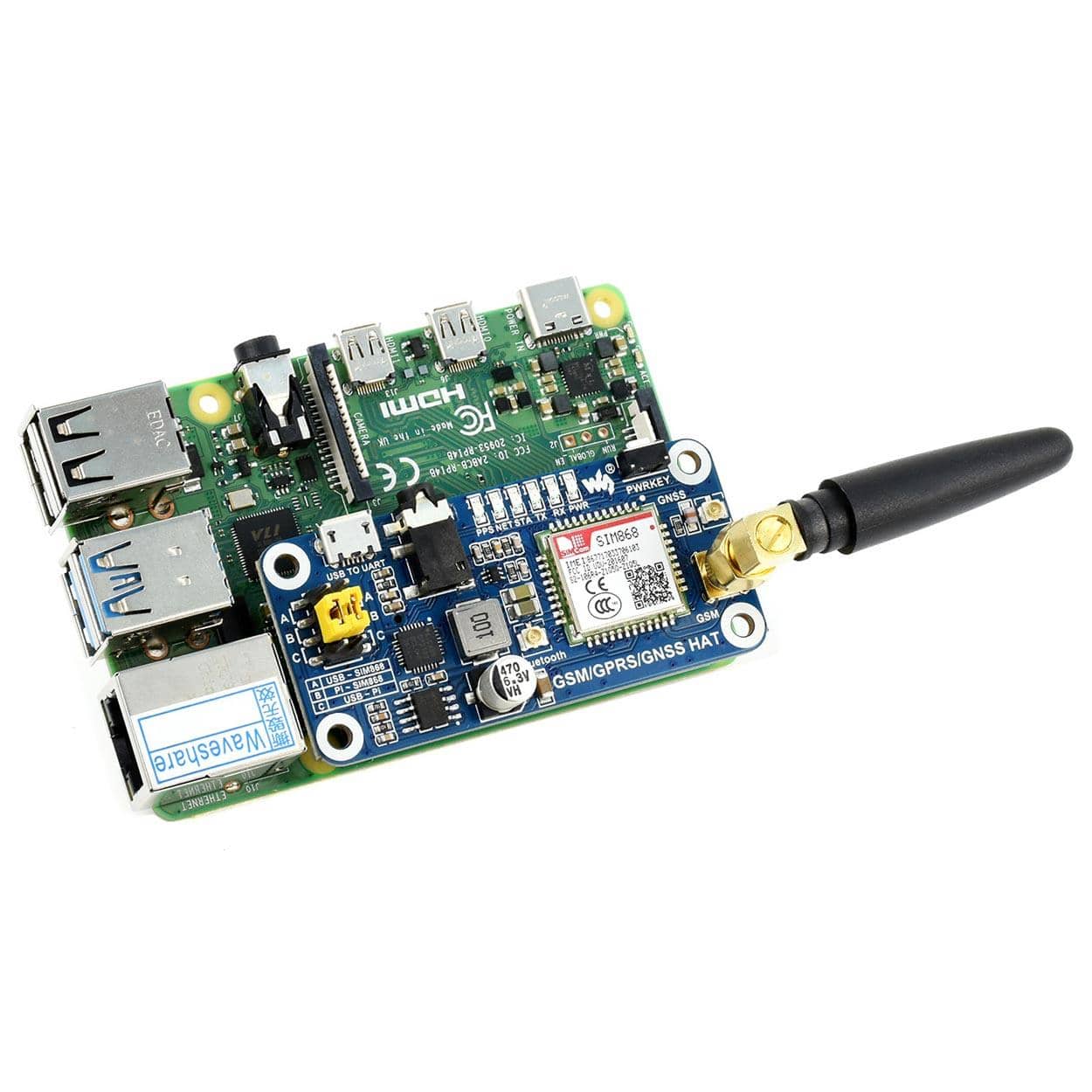
Login / Signup
Cart
Your cart is empty
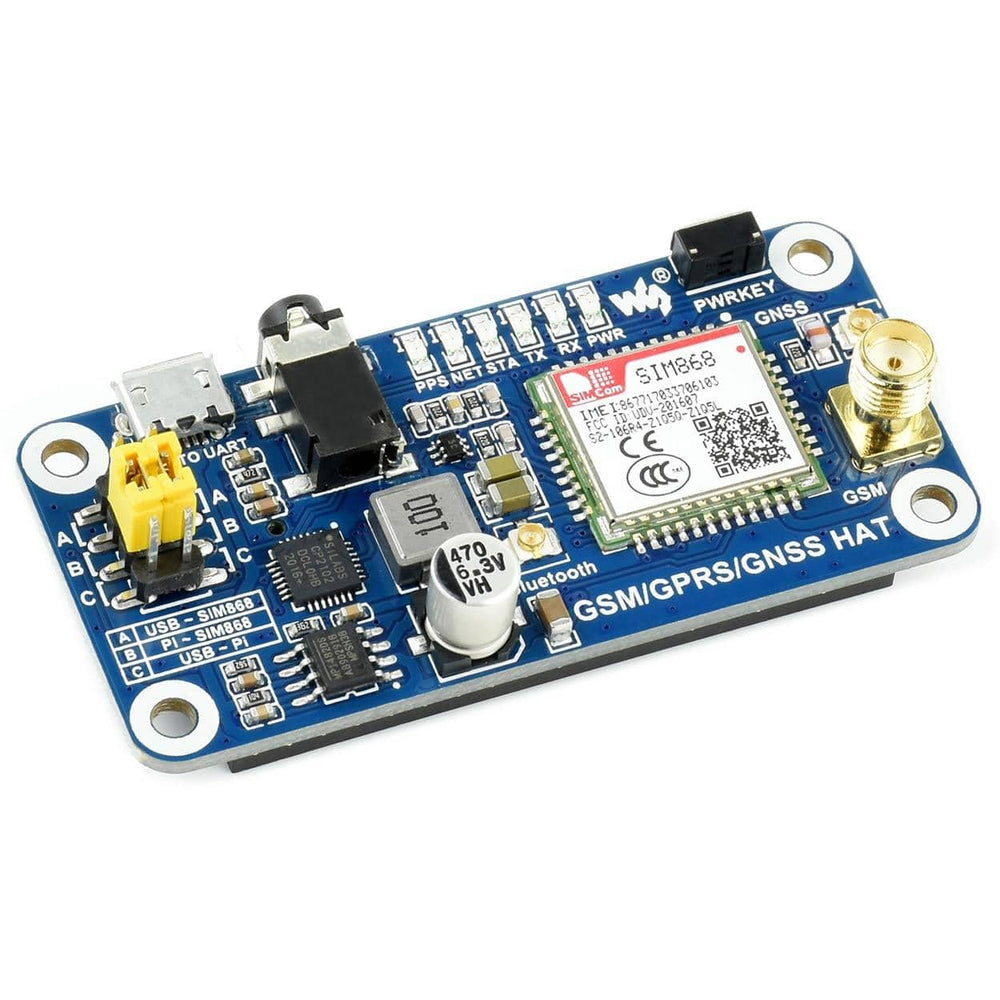
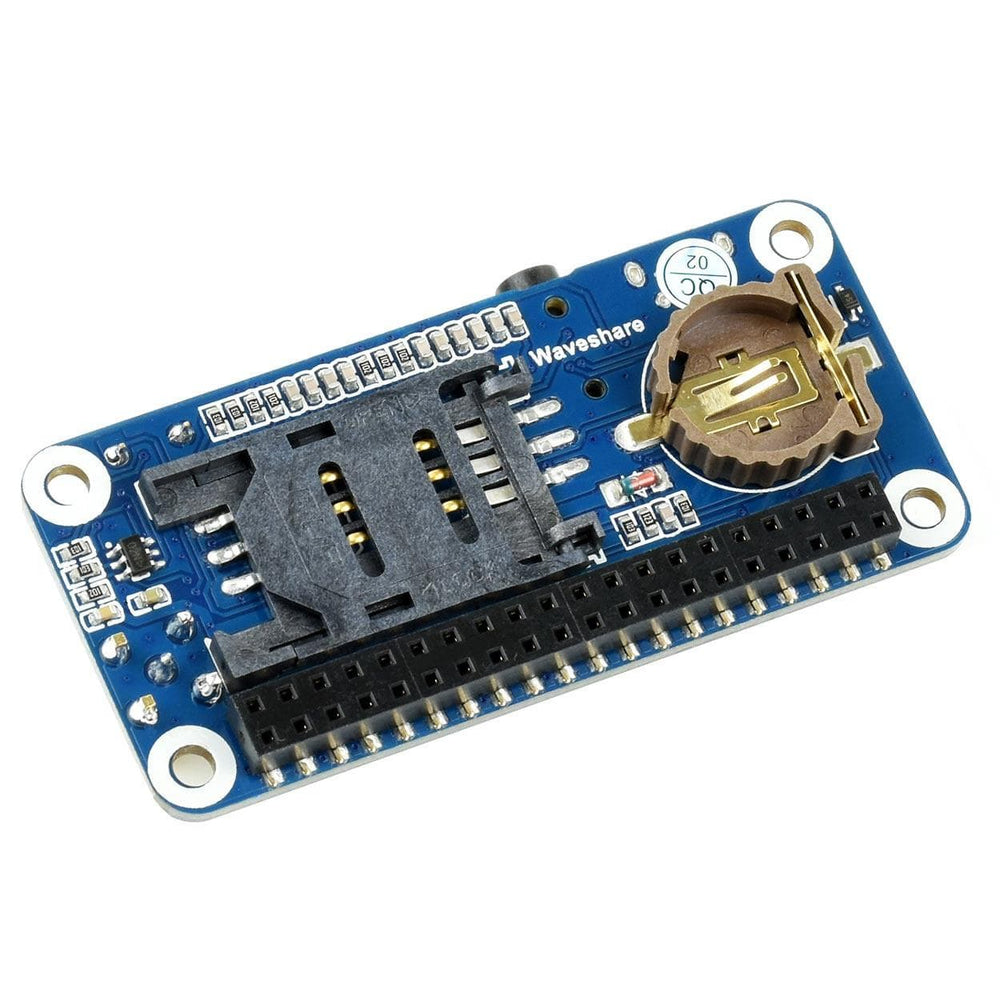
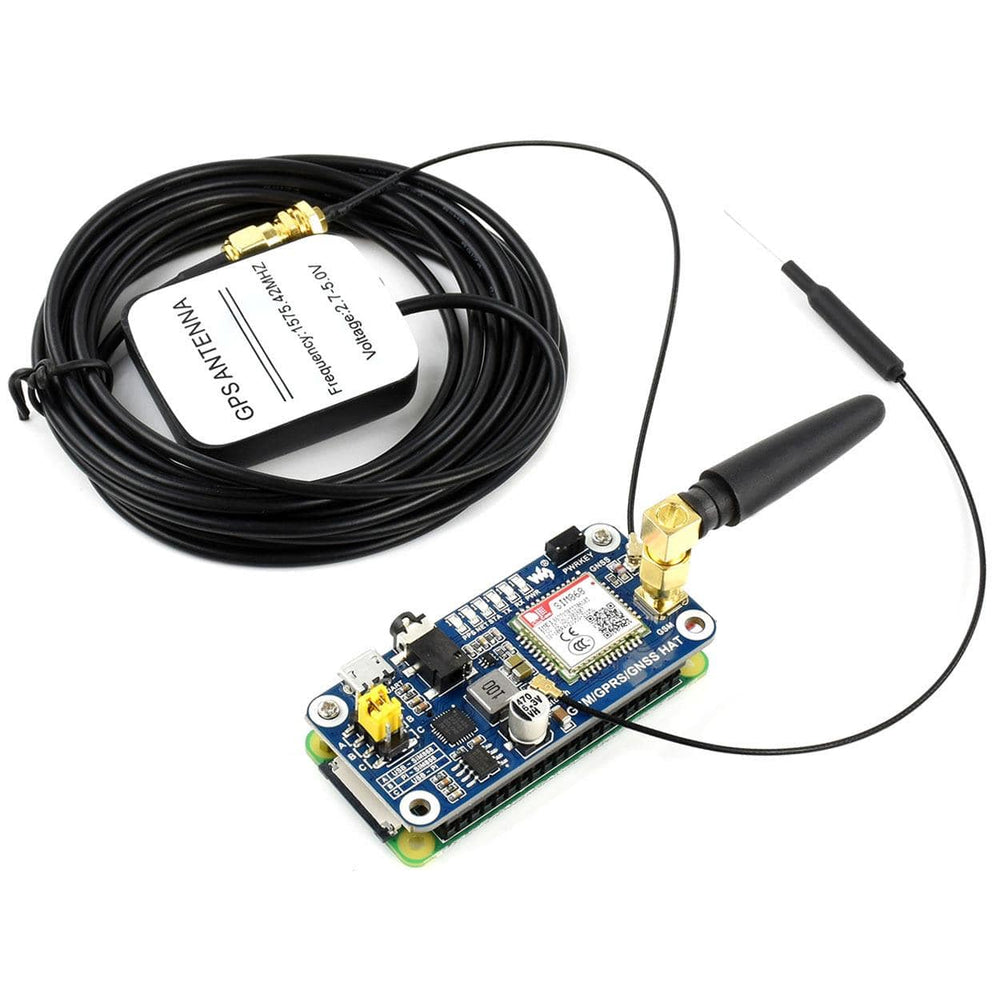
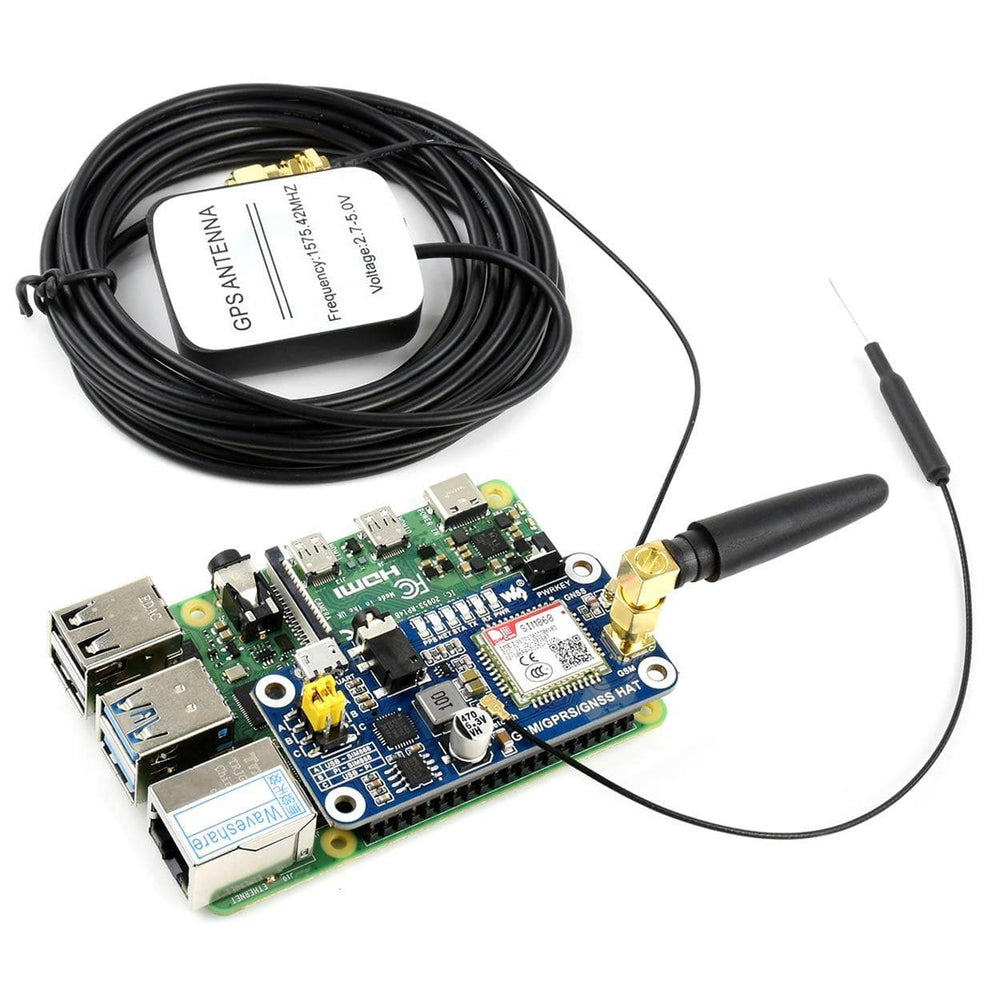
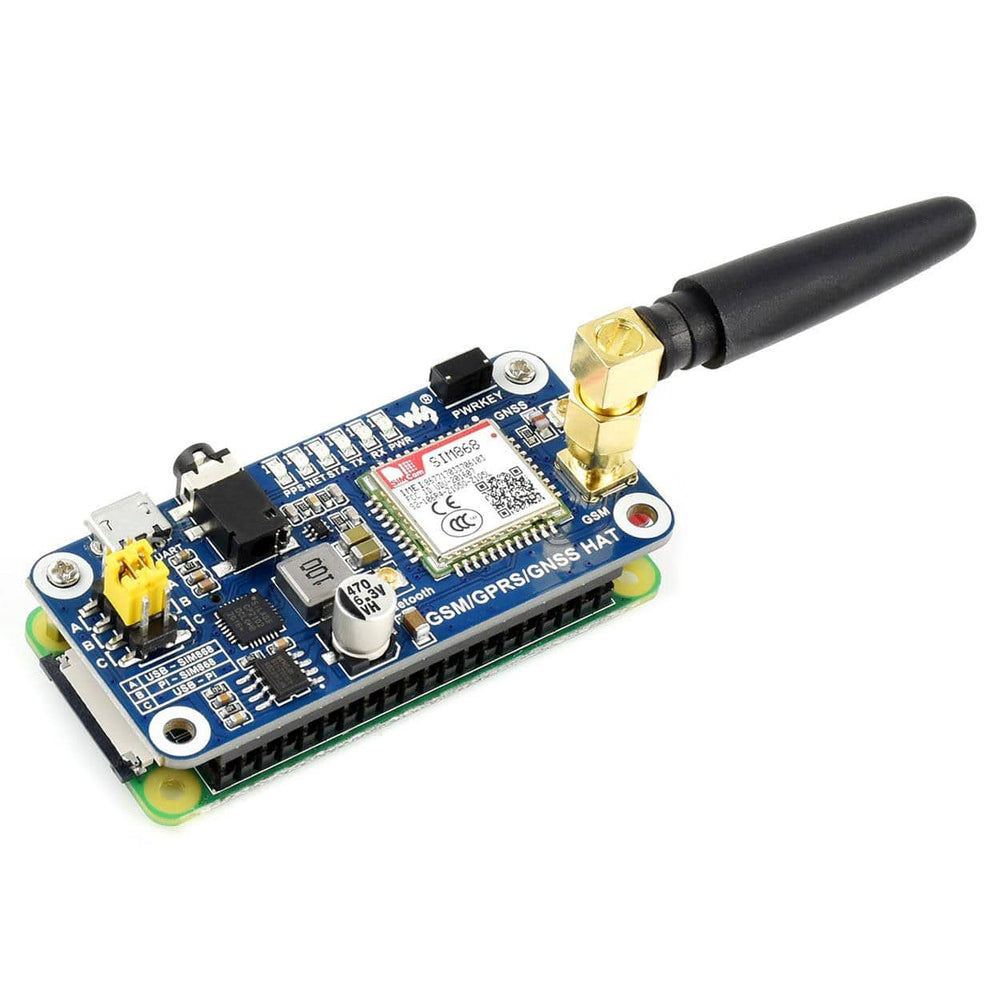
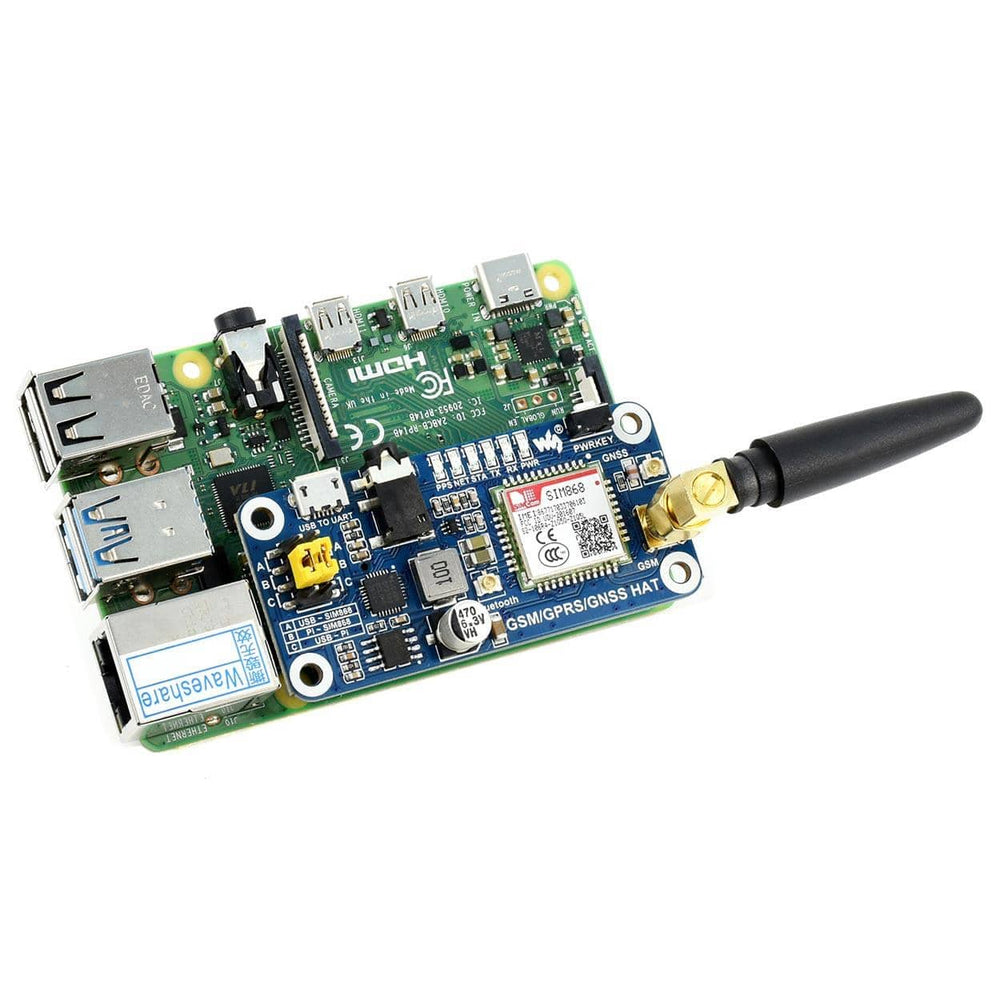
This is a low-power Raspberry Pi HAT that features multiple communication functionalities: GSM, GPRS, GNSS and Bluetooth! The HAT supports GPS, COMPASS, Glonass, LBS base station positioning and omni-positioning.
It allows your Raspberry Pi to easily make a telephone call, send messages, connect to wireless Internet, track global positioning, transfer data via Bluetooth and more! A 1.8V/3V sim card slot allows you to add a compatible sim card for data connections and calls, which is supported by the onboard 3.5mm audio connector.
The board also features a Real-time Clock (RTC) for keeping accurate time, which uses a CR1220 battery (not included). Six onboard LEDs indicate the module working status, whilst debugging is further aided by the onboard CP2102 USB to UART converter for UART debugging.
The kit comes complete with the HAT, GSM, GPS and Bluetooth antennas alongside a USB cable and fixings. Online development resources are available to get you started too!
Note: Raspberry Pi not included
General
GSM/GPRS
GNSS
Bluetooth
Misc

1) SIM868 module
2) ZMM5V1: regulator diode
3) SMF05C: TVS diode
4) CP2102: USB TO UART converter
5) MP1482: power chip
6) NDC7002N: voltage level translator
7) GPS status indicator
8) NET indicator:
- flashes fast when the module starts up
- flashes slowly after GSM register succeed
9) STA module working status indicator
10) SIM868 UART Tx/Rx indicator
11) Power indicator
12) SIM868 control button: press the button and hold for 1s, to startup/shutdown the SIM868
13) Raspberry Pi GPIO connector
14) SIM card slot
15) USB TO UART interface
16) 3.5mm earphone/mic jack
17) GNSS antenna connector
18) Bluetooth antenna connector
19) GSM antenna connector
20) CR1220 battery holder: for RTC backup battery
21) UART selection switch
A: control the SIM868 through USB TO UART
B: control the SIM868 through Raspberry Pi
C: access Raspberry Pi through USB TO UART







